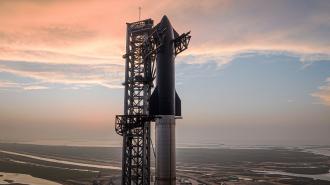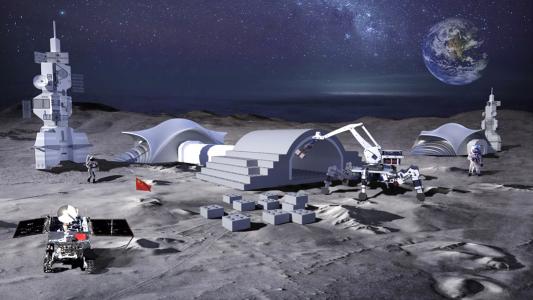In SpaceX’s first Starship launch attempt, the massive spacecraft made it off the pad — but exploded before it could complete the journey to space.
Starship launch: Starship lifted off from a custom-built launch tower at SpaceX’s Starbase in Texas at 9:33 a.m. EST on April 20. About 3 minutes later, Starship was supposed to separate from its Super Heavy booster, ignite its six Raptor engines, and complete the journey to space.
That didn’t happen, though.
After performing a scheduled flip maneuver, Starship’s first and second stages remained linked, rotating in the air for a short period of time before exploding in a giant fireball or, as SpaceX likes to say, experiencing a “rapid unscheduled disassembly.”
Growing pains: Simply clearing the launch tower was a big milestone for the Starship launch — there was a chance the whole system could have blown up before even getting off the ground.
“With a test like this, success comes from what we learn, and today’s test will help us improve Starship’s reliability as SpaceX seeks to make life multi-planetary,” SpaceX tweeted after the explosion.
The big picture: At a height of 390 feet, with the ability to lift 330,000 pounds of payload to low Earth orbit (LEO), Starship is the biggest rocket in the world. When it does achieve orbit, it’ll overtake NASA’s Space Launch System (SLS) — 322 feet tall and a payload capacity of 154,000 — as the largest to reach space.
Unlike the SLS, Starship is designed to be reusable, which should dramatically cut launch costs — SpaceX CEO Elon Musk expects each Starship launch could cost less than $10 million, compared to an estimated $4 billion for each launch of the expendable SLS.
“Starship can land 100 tons on the lunar surface, and it’s really hard to think about what that means in a tangible way.”
Aarti Matthews
That would dramatically cut costs to access LEO — a huge boon to satellite companies, scientists, and more — but the real appeal of a massive, powerful rocket like Starship is its ability to carry large payloads deep into space.
“Starship can land 100 tons on the lunar surface,” Aarti Matthews, Starship Human Landing System program manager for SpaceX, told Ars Technica in 2022. “And it’s really hard to think about what that means in a tangible way.”
“One hundred tons is four fire trucks. It’s 100 moon rovers,” he continued. “My favorite way to explain this to my kids is that it’s the weight of more than 11 elephants.”
A packed Starship wouldn’t have the fuel needed for a return trip from the moon, but SpaceX is already researching ways to refuel off-world — if it can figure that out, the ultimate goal is to use the spacecraft to carry people and supplies to Mars.
“You could conceivably have five or six people per cabin, if you really wanted to crowd people in,” Musk predicted in 2017. “But I think mostly we would expect to see two or three people per cabin, and so nominally about 100 people per flight to Mars.”
We’d love to hear from you! If you have a comment about this article or if you have a tip for a future Freethink story, please email us at [email protected].






